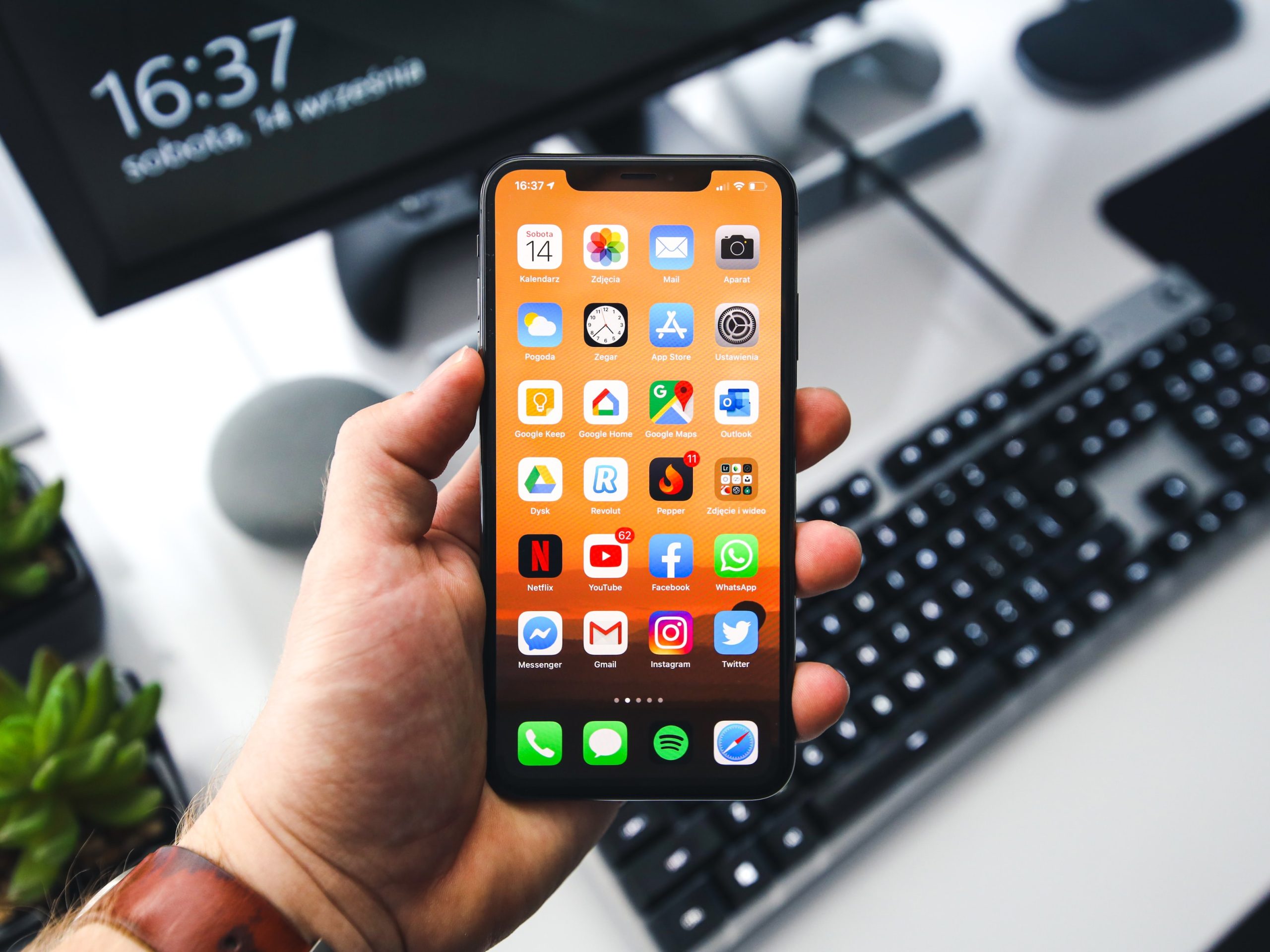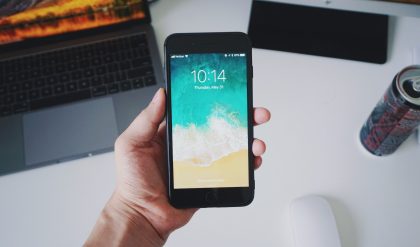
Jailbreaking of iPhones has become increasingly popular in recent years. But if you’re new to jailbreaking, you probably have a lot of questions about how it works and how you go about jailbreaking.
What exactly does jailbreaking an iPhone entail? And more importantly, is a computer an absolute prerequisite for this process? In this article, we will sort these questions out and provide you with a comprehensive understanding of jailbreaking and the options available to users.
Understanding Jailbreaking
Jailbreaking is the term used to describe the process of circumventing the limitations and restrictions imposed by Apple on its iOS devices, particularly iPhones. Jailbreaking can be done on virtually all devices but in this article, we will focus specifically on iPhone.
For the iPhone and all its other products, Apple has built a robust ecosystem to ensure security and stability. But some users prefer greater control and customization over their devices and this is where Jailbreaking comes in. Jailbreaking gives users the ability to access the core system files and install applications, make tweaks, and modifications that are not available through the official Apple App Store.
In essence, jailbreaking offers increased freedom and enhanced functionality. Jailbreaking offers a realm of possibilities, from installing third-party apps that offer unique features to customizing the appearance and functionality of your iPhone to suit your preferences.
The Main Question: Do You Need a Computer for Jailbreaking?
Now to the main question of this article: Do You Need a Computer for Jailbreaking?
Traditionally, jailbreaking has often been associated with the use of a computer. However, things have evolved and new methods have become available. Without further ado, let’s dig in.
What Is Jailbreaking?
Jailbreaking is the act of liberating your iPhone from the constraints and limitations of the ecosystem that Apple has imposed on its operating system.
Jailbreaking is similar to unlocking the hidden potential of your iPhone or chipping your car. Apple tightly controls the iOS ecosystem by default, with the purpose of ensuring that only apps and functionalities approved by Apple are accessible through the official App Store. This is ultimately to protect the devices and ensure they function as intended. But at the same time, this also means that certain customizations, apps, and system tweaks are off-limits to users.
Jailbreaking, therefore, works as a key to the locked gates which grants you access to your device’s operating system. When your iPhone is jailbroken, it can run apps and modifications that have not been approved by Apple, thereby opening up a whole world of possibilities.
Why Jailbreak?
Jailbreaking of iPhones and other devices has become increasingly popular so it’s only natural that there are several benefits fo doing so. Why would you want to jailbreak your iPhone, you might ask? The answer is the desire for greater control and personalization. By jailbreaking, users can:
- Install Unapproved Apps: Gain access to a large number of third-party apps and tweaks not available through the App Store, some of which can reatly change how your iPhone functions.
- Customize the User Interface: Tailor the look and feel of your device with custom themes, icons, and system tweaks, creating a unique user experience.
- Enhance Functionality: Add features and capabilities that Apple’s iOS doesn’t provide, such as improved multitasking, advanced file management, or enhanced system utilities.
- Unlock Network Restrictions: On older iPhone models, jailbreaking could unlock the device, allowing it to be used with different carriers, a particularly handy feature for international travelers.
Legal Implications and Risks
Before you begin jailbreaking, it’s important to be aware of its legal status. In the past, there were debates about the legality of jailbreaking. However, jailbreaking is legal in the United States under specific circumstances. However, Apple’s official stance is that jailbreaking voids the warranty, which is something to keep in mind.
Moreover, it’s important to point out that jailbreaking is not without risks. Modifying your iPhone’s operating system can increase its instability and lead to security vulnerabilities if not executed carefully. We’ll also discuss some of these risks further on.
Traditional Jailbreaking with a Computer
The traditional method of jailbreaking iPhones has always been associated with the use of a computer. Here is what you should know about this method:
The Traditional Method
Traditionally, jailbreaking your iPhone with a computer involves a well-established set of steps. This method typically requires the use of a computer, a USB cable, and specific software tools. Let’s outline the key components:
- Computer: You’ll need a Mac or Windows PC to perform the jailbreak. The computer works as the control center for the process, where you download the necessary software and manage the connection to your iPhone.
- USB Cable: A standard USB cable is used to physically connect your iPhone to the computer. This connection allows the jailbreak tools to communicate with your device.
- Jailbreaking Software: Various software tools, such as Pangu, TaiG, or unc0ver, are available to facilitate the jailbreaking process. These tools are regularly updated to support different iOS versions and iPhone models.
Step-by-Step Jailbreaking Process
Jailbreaking your iPhone through the traditional method follows a series of steps:
- Backup Your Data: It’s crucial to back up your iPhone data using iTunes or iCloud before beginning the jailbreak process. This precaution ensures that your data is safe in case something goes wrong during the jailbreak.
- Download the Jailbreak Tool: Visit the official website or trusted sources of the jailbreaking tool you plan to use. Download the tool compatible with your iOS version and iPhone model.
- Connect Your iPhone: Plug your iPhone into your computer using the USB cable. Ensure that iTunes is not running, as it can interfere with the jailbreak.
- Run the Jailbreak Tool: Launch the downloaded jailbreaking software on your computer. Follow the on-screen instructions to initiate the jailbreak process. This typically involves clicking a “Start” or “Jailbreak” button.
- Wait for Completion: The jailbreaking process may take a few minutes to complete. Your iPhone will go through several steps, including reboots, as the software modifies the iOS system.
- Cydia Installation: After successfully jailbreaking, the tool will install Cydia, a package manager that serves as the gateway to installing third-party apps and tweaks.
- Restore Backup: Once the jailbreak is complete, you can restore your iPhone from the backup you made earlier. This step ensures that your data, apps, and settings are intact.
Pros and Cons of Traditional Jailbreaking
Let’s look at the pros and cons of the traditional jailbreaking method:
Pros:
- Reliability: Traditional jailbreaking methods are typically well-tested and proven to work on compatible iOS versions and devices.
- Access to a Wide Range of Tweaks: Cydia provides access to a lare library of third-party tweaks, themes, and apps that can enhance your iPhone’s functionality and appearance.
Cons:
- Computer Dependency: This method requires access to a computer, which may not always be convenient for users on the go.
- Security Risks: Jailbreaking can potentially expose your device to security vulnerabilities if you install untrusted or malicious software.
- Voided Warranty: Apple considers jailbreaking a violation of its terms, which may void your device’s warranty.
No-Computer Jailbreaking Methods
Now to the key question of this article: are there jailbreaking methods for your iPhone without a computer=
The good news is that technology has evolved, an important development of jailbreaking is the emergence of no-computer jailbreaking techniques. This offers iPhone users an easier and perhaps more convenient way of customizing their device. Let’s have a closer look at these alternatives.
No-Computer Jailbreaking
No-computer jailbreaking methods offer a simplified jailbreaking process by eliminating the need for a computer. These methods of jailbreaking involve specific apps or online services that can be accessed directly from your iPhone.Here’s a closer look:
- Mobile Apps: Several third-party mobile applications have been developed to enable no-computer jailbreaking. These apps can be downloaded directly to your iPhone, allowing you to initiate the jailbreak process directly from your device.
- Online Services: Some online services provide remote jailbreaking capabilities. Users can visit a website, follow the provided instructions, and complete the jailbreak process without connecting their iPhone to a computer.
Different No-Computer Methods Available
No-computer jailbreaking has gained popularity due to its simplicity and accessibility. Here are some of the primary no-computer methods available:
- Online Jailbreak Tools: Several websites offer online jailbreak solutions that require nothing more than a visit to the site and following a few on-screen instructions. These tools are typically web-based and compatible with a range of iOS versions.
- Mobile App Stores: Some third-party app stores, such as TweakBox and AppValley, provide access to jailbreak apps and tools that can be downloaded directly to your iPhone. These stores offer a selection of apps and tweaks without the need for a computer.
- App-Based Jailbreak Tools: Certain mobile apps, like Unc0ver or Checkra1n, can be installed on your iPhone and used to initiate the jailbreak process without the aid of a computer. These apps often require specific iOS versions or device models.
Pros and Cons of No-Computer Jailbreaking
As with any method for jailbreaking, no-computer jailbreaking has both advantages and limitations:
Pros:
- Accessibility: No-computer methods are particularly user-friendly and accessible for those who may not have immediate access to a computer.
- Convenience: You can initiate the jailbreak process directly from your iPhone, eliminating the need for a computer, USB cables, or software installations.
Cons:
- Compatibility Restrictions: No-computer methods may not be available for all iOS versions or iPhone models, limiting their applicability.
- Security Concerns: Using third-party apps and online services for jailbreaking may pose security risks if they are not from trusted sources.
- Limited Functionality: No-computer methods may not offer the same level of compatibility or feature set as traditional jailbreaking methods.
It’s worth pointing out that the availability and success of no-computer jailbreaking methods can vary depending on the iOS version you’re running as well as your specific iPhone model. Make sure that you are careful and do your research before using any of the methods discussed above to protect the integrity of your iPhone.
Comparison: Computer vs. No-Computer Jailbreaking
Now that we have a good understanding of both alternatives for jalbreakin at our disposal, let’s compare them side-by-side.
Ultimately the method you choose will come down to your own personal preference.
1. Speed and Convenience
Computer-Based Jailbreaking:
- Speed: Traditional jailbreaking with a computer is generally a straightforward and efficient process, often completing within a matter of minutes.
- Convenience: While it requires a computer, the process is well-documented and typically hassle-free for those comfortable with computer-based procedures.
No-Computer Jailbreaking:
- Speed: No-computer methods are known for their speed and simplicity, with some taking only a few minutes to complete the entire jailbreaking process.
- Convenience: These methods offer unparalleled convenience since they can be initiated directly from your iPhone, eliminating the need for external devices.
2. Reliability and Stability
Computer-Based Jailbreaking:
- Reliability: Traditional methods are generally considered reliable and well-tested, with a history of successful jailbreaks for various iOS versions and devices.
- Stability: These methods tend to be more stable, resulting in fewer issues or crashes after jailbreaking.
No-Computer Jailbreaking:
- Reliability: No-computer methods may vary in reliability, with some being less dependable, especially for the latest iOS versions or less common iPhone models.
- Stability: Stability can be a concern with no-computer methods, as they may not always provide the same level of stability as traditional approaches.
3. Safety and Security
Computer-Based Jailbreaking:
- Safety: Traditional methods tend to be safer when sourced from trusted providers. However, there’s always a risk associated with modifying your device’s core system.
- Security: These methods are generally considered more secure, as they have undergone scrutiny and testing by the jailbreaking community.
No-Computer Jailbreaking:
- Safety: No-computer methods can be riskier, particularly if you’re relying on unknown sources or unverified apps.
- Security: Security concerns may be more prevalent with no-computer methods, as they often lack the same level of scrutiny as established tools.
4. Device Compatibility
Computer-Based Jailbreaking:
- Compatibility: Traditional methods are more likely to support a wide range of iOS versions and iPhone models, especially older devices.
No-Computer Jailbreaking:
- Compatibility: No-computer methods may have limitations regarding supported iOS versions and specific iPhone models, which can be a drawback for some users.
5. User Experience
Computer-Based Jailbreaking:
- Experience: The user experience with computer-based methods can vary but is often seen as more technical and involved, requiring familiarity with computer software.
No-Computer Jailbreaking:
- Experience: No-computer methods are generally designed to be user-friendly and accessible, making them suitable for those with limited technical expertise.
As already mentioned, the choice between computer-based and no-computer jailbreaking depends on your preferences.
The computer-based methods are the traditional methods of jailbreaking but at the same time, no-computer methods offer a more convenient and accessible approach.
Risks and Consequences
Before you get started with jailbreaking your iPhone, you need to be aware of the potential risks and consequences of doing so.
These can impact both your device and your overall digital security. Here’s what you need to know:
Potential Risks of Jailbreaking
- Bricking Your Device: Jailbreaking, especially when done incorrectly or using unreliable tools, can lead to a malfunctioning device, rendering it unusable. This is often referred to as “bricking.”
- Security Vulnerabilities: Opening your iPhone’s operating system to third-party modifications can expose it to security risks. Installing unverified tweaks or apps can introduce vulnerabilities that malicious actors might exploit.
- Loss of Warranty: Apple’s official stance is that jailbreaking voids the warranty on your device. This means that if your iPhone encounters issues that would typically be covered by warranty, Apple may refuse to provide support or repairs.
- Incompatibility Issues: Some apps and features may not work correctly on a jailbroken device, as the modifications can clash with iOS updates or cause conflicts.
Consequences of Jailbreaking Gone Wrong
- Unrecoverable Data Loss: If your iPhone becomes bricked or unstable due to jailbreaking, you could lose all your data unless you have a recent backup.
- Compromised Security: Installing apps or tweaks from unofficial sources can expose your device to malware, data breaches, and unauthorized access.
- Inhibited Updates: Jailbreaking may prevent you from receiving and installing official iOS updates, which can include critical security patches.
- Limited Support: When you encounter problems with a jailbroken device, you’ll find that Apple’s customer support will often refuse assistance, citing the warranty void.
Legality and Potential Consequences
As concluded above, jailbreaking is in fact legal under specific circumstances in some regions. But it’s also important to know that jailbreaking is still a gray area. Apple opposes jailbreaking which could have negative effects on your iPhone. We do not intend to discourage you from jailbreaking but it’s important to know what you’re getting into before you begin.
Here are some important tips to help you mitigate the risks:
- Research Thoroughly: Before jailbreaking, educate yourself about the methods, tools, and trusted sources within the jailbreaking community.
- Backup Your Data: Always back up your iPhone data before jailbreaking to prevent data loss in case of unforeseen issues.
- Use Trusted Sources: Only install apps, tweaks, and tools from reputable sources and repositories within the jailbreaking community.
- Stay Informed: Keep abreast of iOS updates and jailbreaking news to understand the potential impacts on your jailbroken device.
- Exercise Caution: Be cautious when experimenting with advanced tweaks and modifications, and don’t hesitate to seek advice from experienced jailbreakers.







